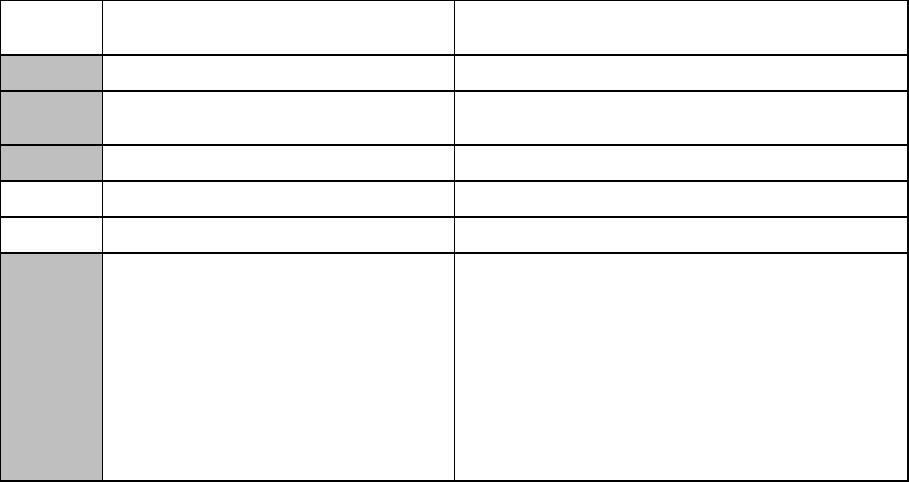
V - 46
WSW36 (Function setting 14)
Selector
No.
Function Setting and Specifications
1 ECP* mode 0: ON 1: OFF
2
Recovery from Inactive PC
Interface
0: Disabled 1: Enabled
3 PC Power-off Recognition Time 0: Normal 1: Long
4 Not used.
5 Escape from Phase C 0: Yes 1: No
6
|
8
Lower limit of frequency to be
ignored after detection of calling
signals (Ci)
No. 6 7 8
0 0 0 : 0 (Not ignored)
0 0 1 : 4 (448 Hz)
0 1 0 : 8 (244 Hz)
0 1 1 : 12 (162 Hz)
1 0 0 : 16 (122 Hz)
1 0 1 : 20 (97 Hz)
1 1 0 : 24 (81 Hz)
1 1 1 : 28 (69 Hz)
*ECP (Enhanced Capabilities Port)
l Selector 1: ECP mode
The ECP mode enhances the normal bidirectional communications between the facsimile
equipment and the connected PC for higher transmission speed.
l Selector 2: Recovery from Inactive PC Interface
If the facsimile equipment recognizes via the STB signal line that the connected PC is powered
off, it will turn the PC interface outputs Low to protect the PC from hazards that could be caused
by weak electric current accidentally flown from the equipment.
This selector determines whether the equipment should recover from the inactive PC interface to
normal interfacing state upon receipt of data from the PC.
l Selector 3: PC Power-off Recognition Time
This selector sets the time length from when the equipment detects the PC powered off until it
recognizes the detected state as power-off.
If selector 2 is set to "0," it is recommended that selector 3 be set to "1": otherwise, the equipment
may mistakenly detect PC powered off.
l Selector 5: Escape from Phase C
This selector determines whether or not the equipment will escape from phase C when it detects
an RTC (Return to Control) in non-ECM mode or an RCP (Return to Control Partial page) in ECM
mode.
l Selectors 6 through 8: Lower limit of frequency to be ignored after detection of calling signals (Ci)
At the start of reception, if the equipment detects the frequency of calling signals (Ci) specified by
selectors 1 through 4 of WSW14, it will start the ringer sounding. When doing so, the equipment
may fail to detect the calling signals normally due to noises superimposed at the time of reception.
To prevent it, use selectors 6 through 8 of WSW36.
If the equipment detects higher frequencies than the lower limit specified by these selectors, it will
regard them as noise and interpret that detecting state as being normal, allowing the ringer to keep
sounding (until the equipment starts automatic reception of FAX data if in the FAX mode or enters
the TAD mode if set in the TEL mode, according to the preset number of ringers).


















